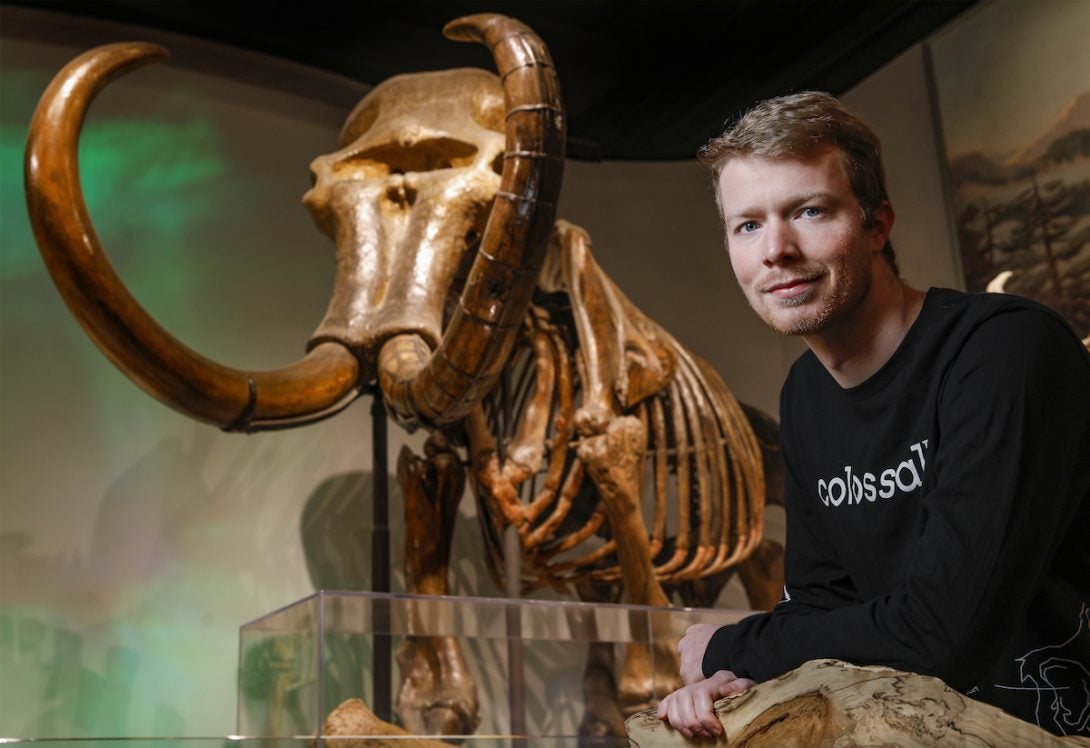Bringing a giant back to life
Bringing a giant back to life Heading link

If you were to ask William Troy, PhD ’21, how he’s using his electrical engineering degree, the answer might surprise you.
He’s helping bring an extinct species back to life.
In what sounds like an excerpt from a science fiction movie, Troy’s new employer, Colossal, is attempting to resurrect the woolly mammoth, 4,000 years after it last roamed earth.
Troy, a Chicago-area native, didn’t initially plan for such a unique career path. He received his undergraduate, master’s, and PhD degrees in electrical and computer engineering from UIC. His interest in biotech was spurred by Richard and Loan Hill Professor and Distinguished Professor Michael Stroscio, his undergraduate and graduate advisor, whose classes got Troy interested in solid state physics.
As a PhD student, Troy worked on several biotech projects. One included inserting nanocrystalline silicon nanowires into various types of cells, including brain cells and umbilical cells, then shining a laser on the cells to observe the intercellular manipulation interactions. Then, he and his collaborators used modeling to determine the cause of the interactions, be it photothermal, photoacoustic, or electromagnetic, and to understand how these interactions could be controlled.
Another project involved creating diagnostic devices for COVID-19, then using molecular dynamics and RNA structure prediction to determine devices that could work on new coronavirus variants.
“It got me from the electrical engineering and solid-state physics, like transistor physics, to the biotech side,” Troy said. “I’m really glad it happened. The area is not only booming—it’s interesting, as well.”
His first few months at Colossal have been a whirlwind.
“One day I’ll be 100% focused on something, and by next day, it’s something else entirely,” Troy said. “A lot of it has been getting what we’re doing up and running, so we can conduct research based off of it.”
The work to bring an extinct animal back to life through genetic engineering—also known as de-extinction—is a complicated process. Colossal is combining fragments of intact woolly mammoth DNA recovered from permafrost-protected tissue samples with DNA from a close relative, the Asian elephant. The two animals share a 99.6% similar DNA makeup, and Colossal plans to use CRISPR genome editing to close the gap. The resulting animal they envision would be a cold-resistant elephant with all the biological traits of a woolly mammoth, able to inhabit the same ecosystem the woolly mammoth once occupied.
“It’s all quite complicated to figure out: how a mammoth is different from an elephant, and how can we figure out these differences and solve for them, so we actually bring back a mammoth,” Troy said.
The company hopes to one day reintroduce woolly mammoths to the Mammoth Steppe ecosystem, which the company says could help reverse global warming and protect the permafrost by reverting the now mossy forests back to grasslands (through grazing), which could more efficiently absorb carbon to mitigate rising temperatures.
Troy is excited about Colossal and the career path he chose. While he’s strayed from his electrical engineering roots, his work with computer simulations and models translates well to his chosen field.
“There are biotech startups popping up left and right; one that is turning blood cells into egg cells, another that just made self-replicating bio robots. If any of them achieve their goals, they are all revolutionary in their own right,” Troy said. “This is a super interesting space for anyone that wants to be in it.”